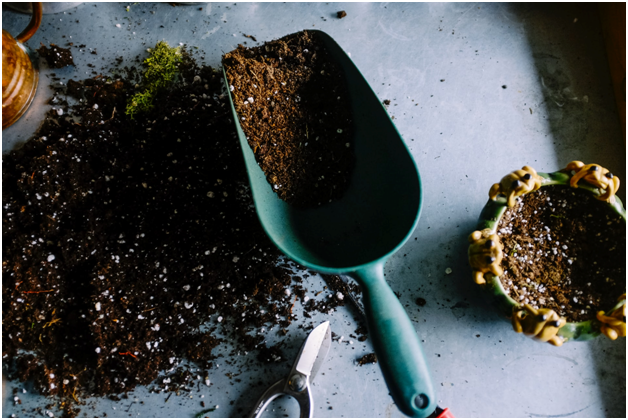
Determining Garden Soil Composition
Understanding garden soil composition is essential for successful gardening, as is being able to amend the soil if necessary. We find that a few simple tests can tell us a lot about the earth we’re working with before we plant a single seedling.
Materials Required
These tests are simple explorations to help determine garden soil composition. Generally, we take a small trowel, some water, and a jar with us when we visit a new site. Of course, we also choose appropriate clothing for digging in the dirt, such as overalls and Rock Rooster boots.

(Figure 1 Photo by Neslihan Gunaydin on Unsplash)
Why Soil Composition Matters
The garden soil composition dramatically affects how productive a site will be. The perfect gardening soil composition is 40% sand, 40% silt, and 20% clay. The sand allows water to drain but doesn’t hold nutrients. The clay contains nutrients and water, but too much clay can drown plants with insufficient drainage. Silt is the material in between clay and sand.
Essentially, garden soil composition comes down to the mix between these three components. That way, the soil drains well, allows air to reach our plant roots, and holds enough nutrients. All soils can be amended to gain these properties.
The Jar Test for Garden Soil Composition
The jar test is our most precise test. For this test, we need to dig up a few samples from different points where we want to place a garden. Then we dry this material on a screen to pick out the organic things, such as leaves and roots. Then place roughly an inch of soil and a teaspoon of salt in a quart-size clear container with a lid.
Then add water until the container is approximately two-thirds full. Next, we shake the jar with the lid on vigorously. After that, the jar needs to rest on a stable surface. We see sand settle immediately to the bottom, and the silt usually follows over the next couple of hours. We find clay takes a few days to settle.
Once the settling is complete, we can hold a measuring tape to the jar and gather data on how large each layer is. This data allows us to set up the ratios that tell us the garden soil composition we’re working with.
(Figure 2 Photo by Gabriel Jimenez on Unsplash)
The Ribbon Exam for Garden Soil Composition
For this test, the soil must be a little damp. We then pick up a clump of earth and try to roll it into a ribbon between our hands. If we can do this and hold the ribbon up, the soil is clay heavy. If the ribbon does not form, then the soil has significant amounts of sand. When the ribbon forms but we cannot hold it up, we know we still have more than the recommended amount of clay.
The Hand Squeeze Test
The hand squeeze test is the least scientific garden soil composition exam. For this test, we pick up a handful of damp soil and squeeze. If it’s slimy, it’s a clay-dominant soil. If we feel grit with our fingers, we know there is a lot of sand. Accurately performing this test takes practice working with different garden soil compositions.

